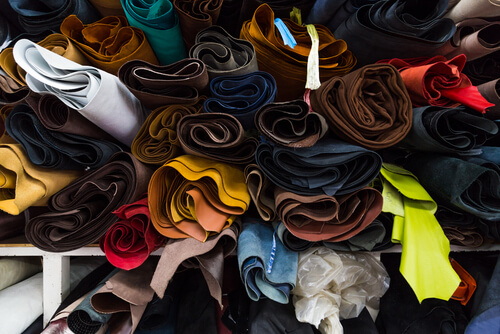
Are you thinking of pursuing a career in fashion once uni is over? Well, we’ll let you in on a little secret. There are a wide range of options available aside from the ones you may expect, such as designers and models. From a career in fashion-related finance, to discovering a role in communications, the opportunities are varied. Take a look at some more alternative routes into the lucrative world of fashion:
Garment technologist

Want to get hands-on in your job? The main role of a garment technologist is to work on the design and development of new materials. Through testing new combinations of materials and fibres, people in this role find the best type of fabric for garments. They work closely with designers, pattern graders and buying teams to find the right type of fabric for items.
Another part of this job is to improve production techniques and help the company become more efficient. This might be to do with price, and would involve liaising with buyers and suppliers to negotiate a cost that’s within the budget of the project. Or, they might be looking to make the company more sustainable, and therefore the technologist would investigate the production of the fabrics.
You’ll need to be aware of the textiles and manufacturing process and have an interest in the creative work that goes into clothing production. Employers may also expect you to have a degree in a related topic, such as garment technology and production, or you may complete a module around this as part of a wider subject. Or, look out for apprenticeship schemes and junior roles, where you can work your way up to this role.
Pattern graders

Apply your logical thinking to something a little different! Pattern grading focuses on producing scaled-up and scaled-down versions of design patterns, which enables the manufacturers to produce the same patterned piece of clothing in different sizes.
Some of the main tasks of a pattern grader include; tracing the outline of a pattern with scanning equipment, quality checking to ensure that the final pattern is in-line with the original design and creating sample garments from the pattern to send to prospective buyers.
Aside from an interest in design and textiles, you also need some mathematical skills. You must be able to take accurate measurements and make calculations in order to scale the patterns correctly. It’s also important that you enjoy being part of a team. So you must be able to cooperate with others in the design process, and be able to confidently use IT to work with a digitising table.
You don’t require a degree to become a pattern grader. Instead, you could take the apprenticeship route through college by studying subjects such as fashion or textiles. Or, work your way up from an assistant or pattern cutter to become a grader in a fashion company.
Fashion illustrators

Love art and fashion? Look no further my friend.
Fashion illustrators are the creators behind fashion drawings and diagrams that represent the garment to others. They work closely with designers to create conceptual sketches and illustrations of fashion products. In addition to this, they may produce advertising copy and images for promotional material for print and online coverage. To succeed in this role, you need to be able to use computer design, as well as drawing by hand and have an eye for fashion.
In terms of academic experience, most fashion illustrators have a degree in graphic design or a related subject. To get accepted onto a degree of this kind, you will need GCSEs and potentially A levels, or entry based on passing a foundation course. Alternatively, you can build up a strong portfolio and gain experience in relevant positions to impress prospective employees.
Fashion journalist

Ever dreamed of writing for glossy mags? Fashion reporters write about the latest in clothing, trends and accessories for fashion outlets/supplements.
Journalists can work for both print and online publications. There is also an option to go freelance, if of course you’re comfortable with flexible work. As part of the job, you’ll likely be required to travel and meet new people to conduct interviews and get the latest on fashion stories.
A creative flair, love for writing and an interest in fashion are a must. Studying a course such as English or Creative Writing will help, but there are also specialty degrees out there. For example, a Fashion Communications course which will teach you more about the sector specifically.
In addition to this, having a writing portfolio can also impress employers. Start your own fashion blog to write about the latest news in the sector and approach editors for freelance opportunities. Networking is also a great way to get to know about future vacancies.
Fashion accountant

If you can’t get enough of numbers, then this is the route for you. There are a range of finance roles available in the fashion sector – from retail accountants to accountants in textiles who ensure that a budget is adhered to when buying materials. Roles like this allow you to be involved with designers and the garment-making process, whilst keeping finances under control.
To get into a finance role, naturally a background in maths is essential. Studying Maths, Economics, Accounting or another form of Financial Studies at university will help. As part of your degree, take up the opportunity to undergo a year in industry – this can give you an insight into the field that you’re going into and give you some invaluable experience for your CV.
Connect with Debut on Facebook, Twitter, and LinkedIn for more careers insights.


